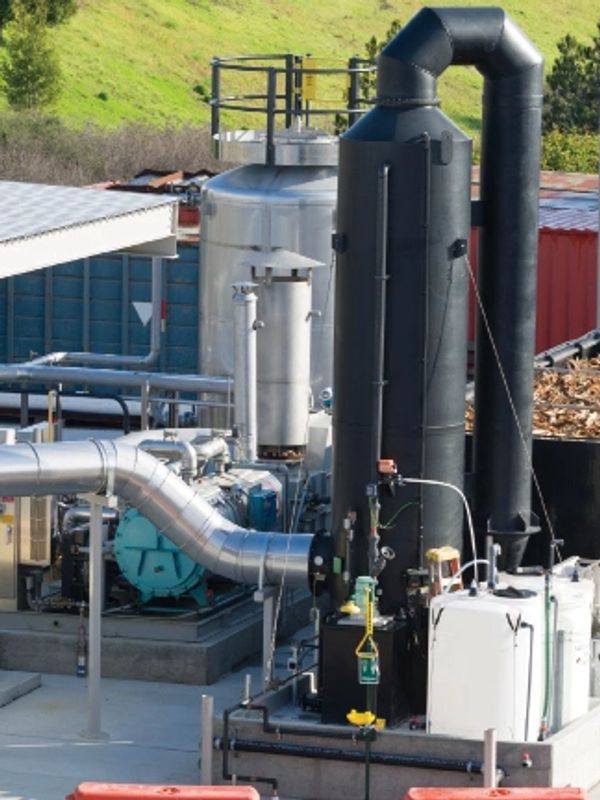EN
Translate:
EN
EN
Translate:
EN

Bio LNG is a cold renewable biofuel that can be produced anywhere where anaerobic digestion (AD) and upgrading for liquefaction is possible. Anaerobic digestion and the production of bio LNG can effectively address issues of clean energy production, environmental conservation, and waste management.

Biogas is upgraded and liquified into Bio LNG, consisting of almost 100% methane. This gas is a renewable form of energy and liquifying the biogas increases the valuation of the gas. Bio LNG (also known as liquefied biomethane) is ideal for manufacturing and industrial businesses with energy-intensive operations, as well as the transport industry.
Businesses that already use LNG can easily switch to Bio LNG as there is no need to change LNG equipment to adapt to Bio LNG.
Bio LNG will help governments meet climate action targets to reduce Co₂, in the EU alone, with policies to boost production of Bio LNG tenfold by 2030.
Likewise, Bio LNG can be mixed with LNG to confer significant Co₂ emissions reductions, supplementing the existing LNG value chain.

By producing fuel from waste, Bio LNG contributes to the circular economy by closing the loop on household waste, industrial waste and agricultural waste.
Anaerobic digestion is the cornerstone of sustainable waste management and the recycling of organic matter into fuel. AD is a naturally-occurring biological process that transforms waste into energy: when biological matter is broken down, a gas is emitted in the process.
The waste inputs for the process include organic effluents such as sewage sludge; bio-waste; organic food waste; and agricultural by-products from farms like manure and straw.
Adding anaerobic digestion to organic waste management to produce fuel curtails greenhouse gas emissions (GHG) from decomposing organic matter – when organic waste is digested in biogas plants, significant GHG emission savings is conferred:

The removal of Co₂ content from biogas is called upgrading, or further purifying the gas to prepare it to be converted into a liquid. There are various methods to upgrade biogas prior to liquefaction, and all processes to upgrade biogas remove CO2 and other impurities for reuse purposes.

Bio LNG can be transported using the existing LNG infrastructure with no further technological adaptations or additional costs. For this reason, the support of LNG infrastructure is fundamental to the future success of bio LNG.
Today, the EU alone has 53 ports where LNG bunkering is available and over 330 filling LNG stations. This number will increase exponentially in the coming years. In the case of LNG stations, it will be six times bigger, reaching 2,000 LNG stations by 2030. The use of the current infrastructure also boosts cross-border trade of Bio LNG globally.
Bio LNG has a much lower carbon footprint than other fossil fuels or biofuels and can reduce Co₂ emissions by more than 80% compared to diesel. There are many benefits for the transport sector; with low Well-to-Wheel or Well-to-Wake (WTW) GHG emissions in production and distribution, as well as low emissions generated during the fuel combustion on the vehicles makes Bio LNG a strong accelerator to carbon neutral mobility.
Supplementing bio-LNG to existing LNG value chains will significantly reduce Co₂ emissions:
Using a 40% bio-LNG mix with LNG will help reduce the Co₂ emissions from this heavy-duty transport by 55%;
In the shipping sector, 50% of large container vessel orders today are LNG fuelled or ready for conversion to LNG;
20% of Bio LNG mix in maritime transport would reduce Co₂ emissions by up to 34%.
Bio LNG is a versatile, renewable fuel that will help accelerate net zero goals in the industrial and transport sectors. Canaf’s IQuay jettyless technology is suitable for Bio LNG transfer, allowing for seaborne transportation and enabling the value chain without having to build a time- and resource- intensive jetty. Learn more about the IQuay Jettyless terminal technology here.
Copyright © 1997 - 2024 Canaf Petro-Chemicals Refinery™ (CPCR) - All Rights Reserved.
This website uses cookies. By continuing to use this site, you accept our use of cookies.